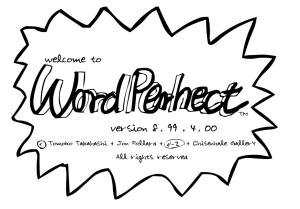The preceding Chapter 4 to our Graham Meikle’s readings, entitled “Open Publishing, Open Technologies,” explores how technology can be autonomous. He cites Langdon Winner, who reminds us about the “deliberate choices about the relationship between people and new technology are made by someone, somehow, every day of the year;” however, technology-based activism is explored in discussion of the open source software movements, such as the Independent Media Centre movement. Meikle explores how “open source software is not only a powerful armory for activists- it’s an activist movement in itself.” As a society, we recognize that technologies are shaped “by particular people in particular contexts,” and the “uses to which a technology is put are not determined by its technological properties alone —those uses are determined by the interaction os social, cultural and economic forces, and the end result will reflect competing interest and objectives,” and such societal shaping is referred to as “in-built politics.”
Understanding the open source movement, Version 1.0, as different than the commercial web design interface, Version 2.0, and corporate imagery, is vital in our beginning to recognize the open publishing potential of the web that Matthew Arnison describes and its “reinventing the idea of the newspaper. Not as a medium of consumption, but of interactivity.” The net is “seriously messing with the way we interface with computers. And it’s feeding back. […] In other words, the shaping of technology is not just down to governments and business, but also to the rest of us -we can adapt technology as well as adopt it….” While previously, society has had no choice other than to watch technological innovation unfold, Langdon Winner’s summary leads to our recognizing “the open source software movement -which underpins online open publishing in both technical and philosophical sense -shows that many people spend every day proving this inevitability to be false.”
Free software refers to applications where the actual programming code is openly accessible rather than masked, “so people are both allowed and encouraged to adapt and customize it for themselves […which] stimulates innovation, experimentation, improvements, which are then passed along for others to build upon.” Thus, open source software proves to be “not only a powerful armory for activists -it’s an activist movement in itself.” Copyleft is an example of a new development in activism that I had not previously considered as “activism,” until I read Meikle’s chapter on open technologies, technologies that are not owned by global corporate giants, who “would need to get control of enough of the hardware and software that runs the internet, and change the rules,” making free software “the main resistance against the privatization of the internet,” according to Arnison, and a “very strong activist movement, but somewhat hidden.” People have the ability to write software that they do not pay for, and they are joining others who are sharing the process of writing software.
“If you provide a space, ” says Gabrielle Kuiper, “where people can be intelligent, imaginative and creative, they will be. We’ve had no problems with people writing inappropriate or even boring news for example. If you look at the news stories, you’ll see that a lot of thought and effort has gone into most of them.”
Open source and IMC movements are not the only Net projects that offer in-built properties of technology, for example “at the level of cultural activism” other Net art works have decidedly raised awareness of how technology is not neutral through a different discourse. For example, Word Perhect is a “web art project which displays a crude, hand-drawn word processing interface” that is all about teasing the user about “our reliance on automated function, but it also points to the in-built values in word processors” and draws attention to “the degrees of skill and autonomy that programmers allow us.”
iT DOESN’T STOP THERE, Natural Selection is another example, “a search engine mind-bomb, created in response to racist, white supremacist material online.” This search engine leaves us questioning “the processes by which our usual search mechanisms select and organize their material.
Meikle concludes this chapter with examples that engage his reflection on how “every struggle for representation ends up as a Benetton ad.” Now that is definitely some food for thought!


Thanks for the info on Natural Selection. I just visited their website and read about some of their research and projects, although there wasn’t much current information there, there was an very interesting article entitled ‘1995 Rehearsal of Memory’ that was relevant to what we had discussed in class on Nov. 5, about the lack consequences of our actions as portrayed in media. It posits that because “the modern machine is currently perceived as a neutral decision making space. This image of anonymity creates a sufficient distance from events to create a situation in which we are ritually free to give up our ability to feel the consequences of our actions.”
That idea is most evident on comment boards across the web, but it also seems to be prevalent anywhere there is a lack of physical interaction between people. And tying it in with your gentrification project, the more we are isolated from difference, the more rigid we become in our beliefs of those others.